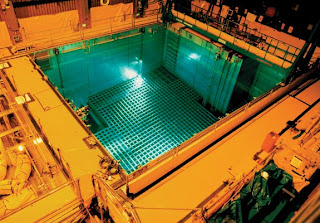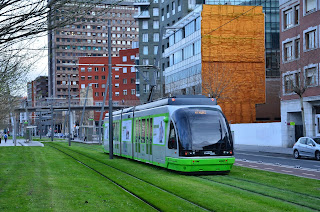The Sunday New York Times Week in Review (March 12, 2011) featured an article about Nimbyism among liberals who would otherwise support renewable energy and alternative transportation projects.
The
article explained how people in Brooklyn, NY, Nantucket, MA, and Berkeley, CA, have opposed local bike lanes, wind farms, and a new public transportation system, respectively, while espousing the benefits of cycling, renewable energy, and public transit. It then sought to explore how other countries have overcome Nimbyism and ultimately generated substantial support for the projects. In part, my travels to Europe are about exploring these same ideas.
I should note, though, that I’m not entirely sure that the media’s portrayal of the opposition is always accurate. A common meme in any news story about renewable energy or public transportation investment is that each project will face considerable opposition. Yet, most stories about the opposition only highlight one or two people, or at most, one or two groups. For example, a headline from a different NYTimes article from a few months ago stated that former wind energy proponents had become opponents due to the noise from a few wind turbines. But the article mentioned fewer than five people who opposed the project, and several other residents expressed their support, noting that the turbines’ noise equated to normal conversation levels and was typically inaudible whenever the wind blew or waves crashed. Similarly, notwithstanding the opposition to the Cape Wind project from the Kennedys and the Alliance to Protect Nantucket Sound, many local organizations, politicians, and economic interests support the project. Nonetheless, these stories often downplay the support and hype the controversy. I fear those types of stories make a transition to renewable energy and innovative transportation solutions even more difficult than they already are.
That said, I did find myself contemplating the recent opposition to a host of U.S. public transportation projects throughout my stay in Bilbao. Governors in Wisconsin, Ohio, and Florida all turned down significant federal funding for high speed rail projects, citing fiscal concerns. While I can’t comment on the soundness of the specific projects, the general unwillingness to invest in public transportation infrastructure, even while the United States dumps billions upon billions into highway building and maintenance, seems very shortsighted. In comparison, Bilbao has invested heavily in public transportation over the past 20 years. These investments have produced the light rail system I blogged about in my last post and an amazing subway system that serves both the center of the city and continues well beyond the city to several smaller towns along the Rio Nervion (the river running through Bilbao and out to the Bay of Biscay). What amazed me most about this system is that it was built in the 1990s and 2000s – i.e., within the past 20 years. Most U.S. subway systems, in contrast, were built in the early part of the last century, before the automobile took hold over the country. Could a U.S. city plagued with transportation difficulties – like Los Angeles or Denver or Seattle or, increasingly, Portland – ever succeed in building a system like Bilbao’s?
Take a look at the photos below to consider what Bilbao has done.
Several features of the subway system and Bilbao’s broader transportation system particularly impressed me.
1. Bilbao has built the most recent subway system in Spain, which features incredibly impressive design elements by Norman Foster. Bilbao's subway travel is both convenient and aesthetically pleasing.
2. According to MetroBilbao, the system operates on 100% renewable energy. Even better, the braking system actually delivers energy back to the system (much like a Prius charges its battery during braking) and reduces electricity consumption by 33%.
3. The light rail system provides above-ground access to the most popular tourist and commercial destinations and operates with amazing efficiency.
4. The light rail and subway systems connect at strategic locations, to make travel above and below ground easy and convenient. They also connect to other transportation networks for long-distance travelers. Thus, someone staying near the Guggenheim Museum can take the light rail directly to the bus station and, from there, travel to Pamplona, Madrid, and many other Spanish cities. By 2012, the subway will also connect to the airport (right now, a bus travels conveniently from the airport to the city center).
5. Both the subway and light rail get tons of use at all times of day and night, in all of their locations, from all sorts of people.











